This featured article appears in Redwoods magazine’s Winter 2022 Resilient Future Edition.
A call for immediate legislative action
An estimated 20% of all the mature giant sequoias in the world have been lost since 2015, when wildfire magnitude and severity sharply increased in California’s Sierra Nevada. Many of these trees were more than 1,000-3,000 years old. As wildfires in the West have reached unparalleled severity, they pose an existential threat to giant sequoias, some of our most iconic national treasures. Having thrived through countless fires over millennia, thousands of these trees have perished in today’s climate-driven fires. Thankfully, elected officials and policymakers can protect the remaining giant sequoias with immediate policy and legislative action. Save the Redwoods League, our partners, and other giant sequoia land managers set a goal to treat 2,000 acres in the most at-risk groves before the 2023 fire season, and were able to more than double that.
Learn about the proposed bill known as the Save Our Sequoias Act.
What’s at risk?
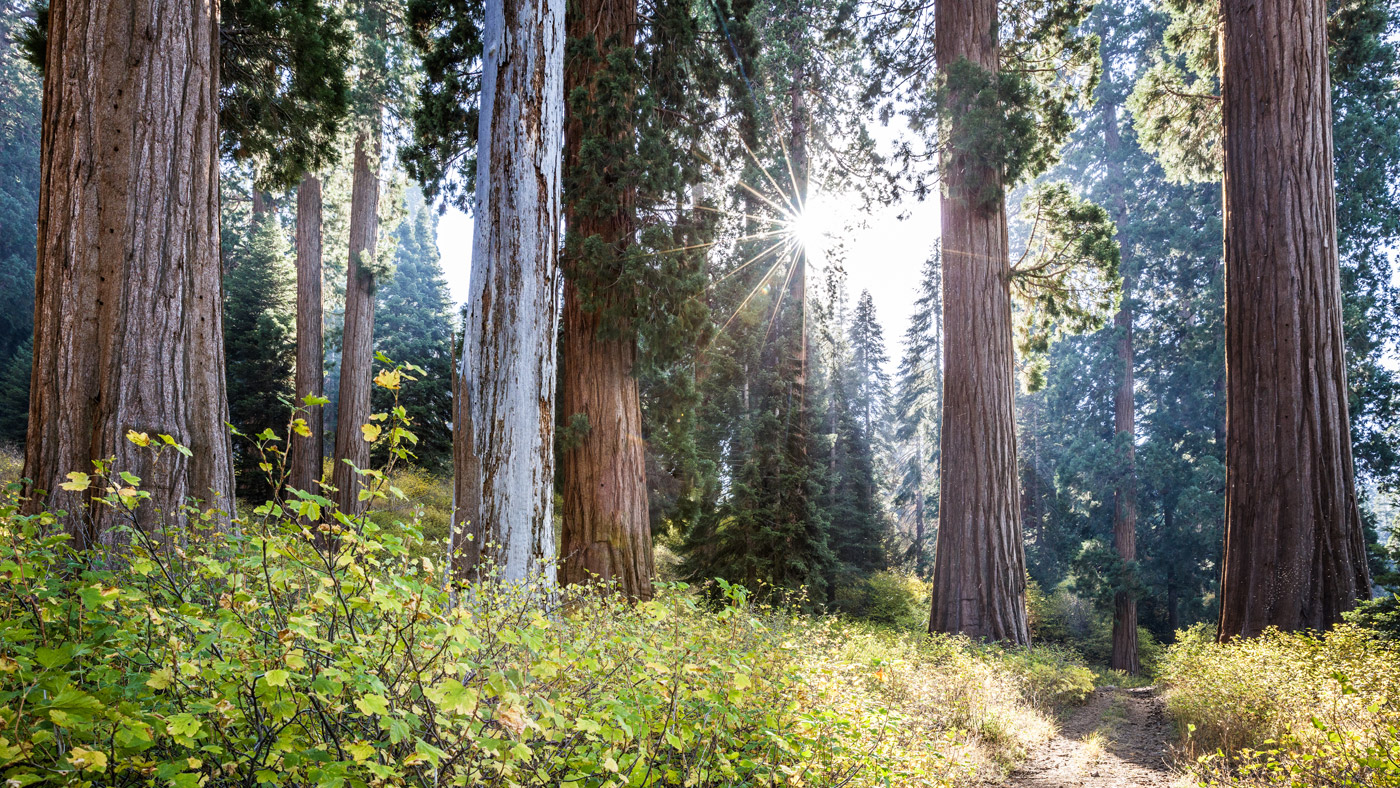
Global treasures
Incredibly large and majestically tall, the breathtaking giant sequoias grow naturally only within a narrow range in the Sierra Nevada extending from Placer County Big Trees Grove in the north to Deer Creek Grove in the south. Giant sequoia groves contain some of the largest and most ancient organisms on Earth. Efforts to protect these monarchs from logging formed the foundation of the American conservation movement in the late 1800s, and these groves have a rightful place alongside our country’s greatest natural wonders such as the Grand Canyon and Yellowstone National Park.
Today, most ancient giant sequoias live in Giant Sequoia National Monument and Sequoia & Kings Canyon National Parks, with nearly 80% of the naturally occurring sequoia range in these two parks. Almost all the roughly 78 naturally occurring groves are managed by 10 state, federal, and county agencies and the Tule River Tribe. Most recently, Save the Redwoods League secured the protection of the Alder Creek and Red Hill properties, the largest remaining private giant sequoia forests.
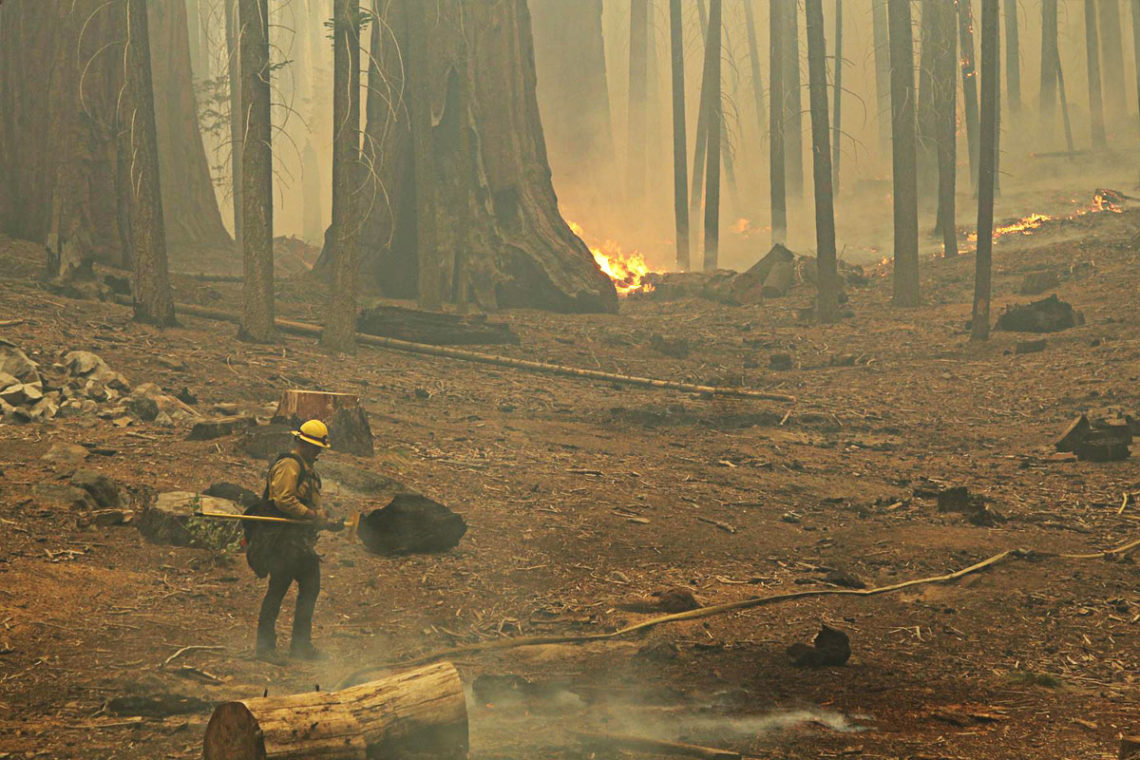
A tinderbox in the groves
Between natural fires and Indigenous cultural fires across millennia, giant sequoias evolved to thrive with low- to moderate-intensity fires occurring every 8-15 years. The protective bark of a mature tree can be up to 2 feet thick, and fire helps their cones open and release seeds, fostering reproduction. However, for over 100 years, state and federal policies have been to extinguish almost every Sierra Nevada fire as soon as it ignites. This suppression and historic land management practices have combined to create unnaturally high densities of understory and midstory trees in giant sequoia groves.
Combined with the drier conditions and longer fire seasons associated with drought and climate change, the result is a tinderbox in our groves. Severe fire entering these dense groves burns up through the younger trees and into the canopies of mature sequoias, killing them. Unlike its coast redwood cousins that can resprout from living roots, when a 2,000-year-old giant sequoia dies, it is gone forever.
The Save the Redwoods League State of Redwoods Conservation Report (2018) recognized the threat and acknowledged the need to prepare the entire giant sequoia ecosystem for more frequent and intense fires. The report proved only too prescient. In recent years, devastating fires have killed an unprecedented number of large, old giant sequoias.
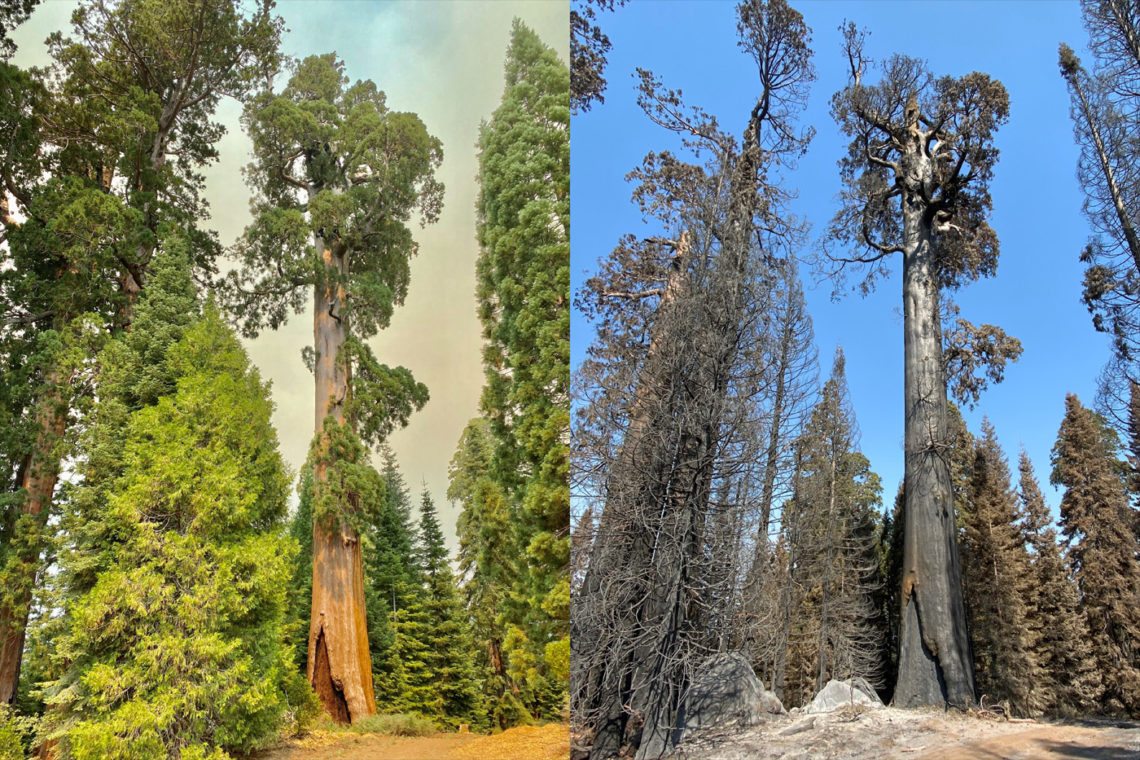
In 2020, the Castle fire killed 10-14% of all mature giant sequoias. The following year, the KNP Complex fire and Windy Fire killed another 3-5% of these magnificent trees. That’s an estimated total of 19% of all giant sequoias killed in only 14 months.
Scientists and park officials predict more catastrophic fires in the years ahead. Old-growth giant sequoias need our help if they are to survive. Organizations that steward giant sequoias must proactively manage all giant sequoia groves at a landscape level, but for the next few years they must focus efforts on the groves at greatest risk.
Giant Sequoia Lands Coalition
Recognizing the threat facing the iconic giant sequoias, the Giant Sequoia Lands Coalition formed to act on this emergency. Including all public and tribal land management agencies involved in stewardship of giant sequoias, plus affiliate partners, the coalition is using the best available science to help ensure giant sequoia forests survive and thrive in the face of climate change and other emerging threats. The coalition will accomplish much more together than any single entity.
Protecting lands is no longer enough. The League and other stewards of giant sequoia forests must proactively manage all giant sequoia groves at a landscape level, but the immediate need is to focus on the groves that have not experienced fire in recent years. Otherwise, we risk losing large numbers of ancient trees.
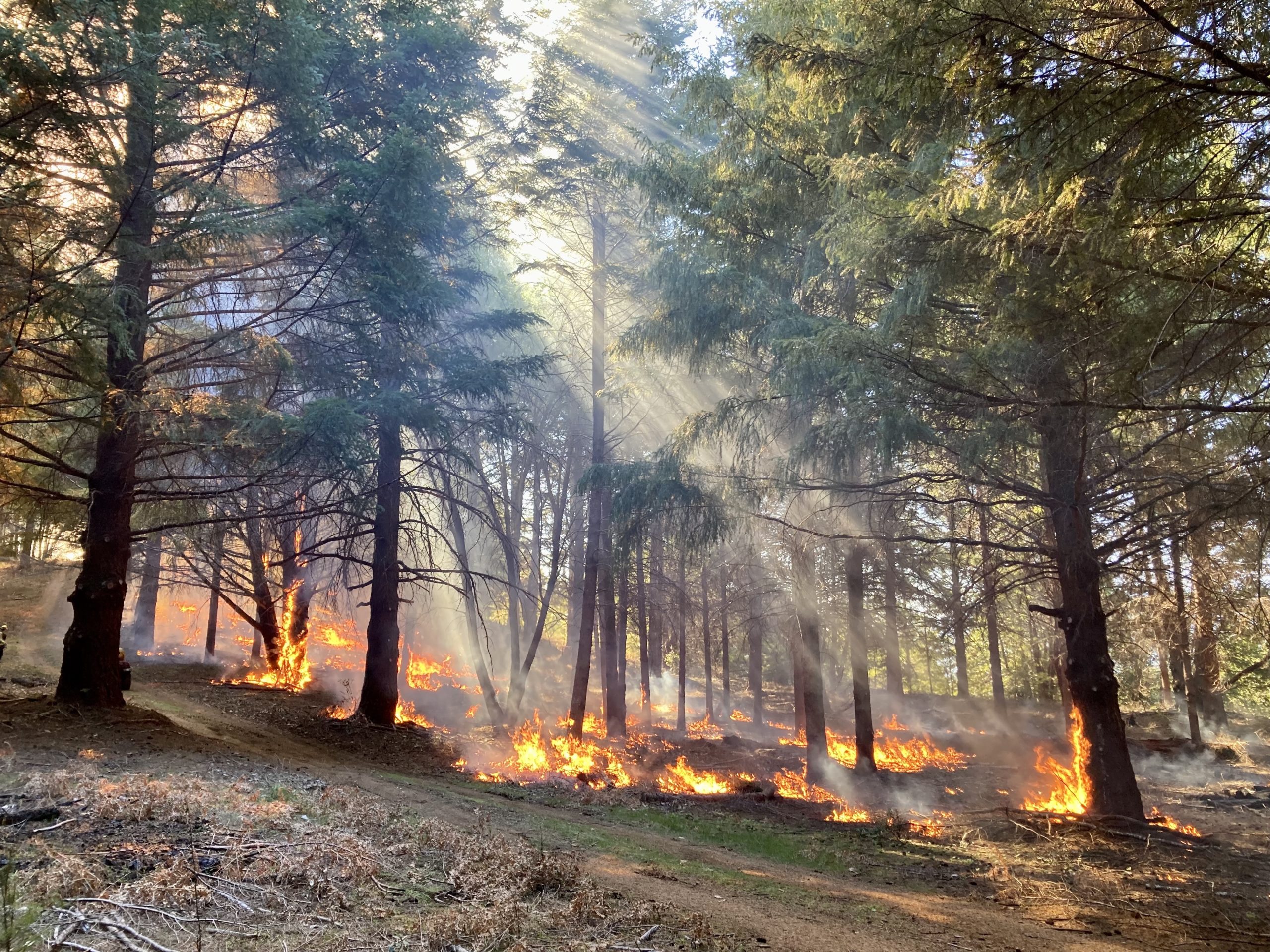
Forest treatment
Giant sequoias evolved with low- to moderate-intensity fire and depend on it for regeneration. The heat from a fire activates cones to open and release seeds. Fire also clears away debris on the forest floor so seeds can reach the soil, germinate, and grow. Historically, lightning strikes and cultural burning by Indigenous peoples ensured forests throughout the Sierra experienced frequent fires. With their thick bark, mature giant sequoias could tolerate these low- to moderate- intensity fires, which mostly burned along the forest floor.
For over 100 years, the formal federal policy has been to extinguish nearly every fire as soon as it ignites. Decades of fire suppression and past logging have combined to create unnaturally high densities of understory and mid-story trees in many giant sequoia groves. To reduce the fuel loads in these forests, many of the smaller trees must be physically removed, stacked into small piles, and burned once conditions allow.
Fuels reduction is a labor-intensive process, especially when the work is done by hand to avoid compacting the soil. However, it’s necessary to prepare groves for naturally occurring wildfires and prescribed fires. The treatment also helps the remaining trees better withstand drought and bark beetle attacks.
In cases where fire has been excluded for a long time, prescribed fire must follow the physical removal of fuels. Once this has occurred, burning can occur on a regular schedule that mimics natural fire cycles.
Timing is crucial. A prescribed burn must comply with the California Air Resources Board and take place outside of fire season and when temperature, humidity, and wind conditions are favorable.
Scaling up active forest management
Until now, state and federal agencies have conducted most prescribed burns in California; however, we need an all-hands-on-deck approach to treat as many acres as possible. This includes returning stewardship to tribes, who have been managing land for millennia. We can also promote Prescribed Burn Associations, which help private landowners obtain skilled crews to conduct burning on their lands.
Many members of the Giant Sequoia Lands Coalition, including the Tule River Indian Tribe, National Park Service, and USDA Forest Service, have been treating portions of giant sequoia groves for decades. Active management works.In 2021, it helped save Trail of 100 Giants, a beloved grove in Giant Sequoia National Monument. This grove had filled in with shade-tolerant conifers, many of which had died from drought and bark beetles. Over 10 years, crews cut the dead trees and burned them in thousands of piles. In 2021, when the Windy Fire entered the grove, it burned hot in a portion that hadn’t been treated, but the intensity decreased once it entered the area that been actively managed. Firefighters came in to help protect some of the bigger trees. Even small, young sequoias survived.
Saving the sequoias
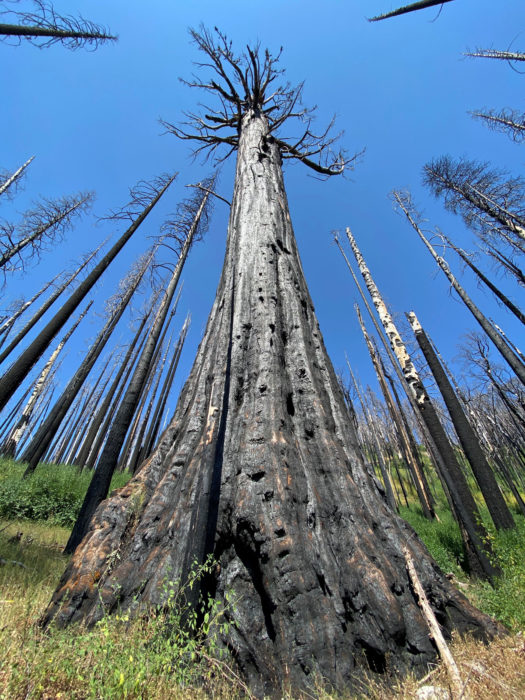
Funding
It is estimated that fighting wildfire costs more than 30 times as much as preventative land care and prescribed burning. The estimated cost to fight the 2020 SQF Complex (Shotgun and Castle) fire was $144 million alone.
These are the funding steps needed to save giant sequoias:
- Appropriate $500 million over five years to treat at least 60,000 acres of the most vulnerable giant sequoia groves and provide treated buffer zones around them.
- Allocate funds from the Federal Infrastructure Investment and Jobs Act for reducing wildfire risk in the wildland-urban interface and for ecosystem restoration targeting grove treatments in appropriate areas.
- Allocate funding toward reforestation of fire- damaged groves to avoid type conversion to shrubland.
- Support the California Blueprint, which proposes $2.7 billion over several years to bolster “critical wildfire resilience programs to increase the pace and scale of forest health activities and decrease fire risk,” and target some of this funding specifically for giant sequoia grove resilience treatments.
Personnel and resources
Treating so many groves in such a short time will require a huge number of personnel and a high degree of coordination. Crews must be ready to deploy when those conditions are favorable. Lining up these resources requires the following:
- Living wages for the federal workforce.
- Full time, year-round federal fire and restoration crews. Build a pipeline of employees and train this workforce.
- Funding to develop and support the tribal workforce.
- Support for nonprofits and private entities to engage in forest restoration efforts.
Regulations and policy
To save the giant sequoias, a consensus on policies and permitting is needed among giant sequoia land management agencies. Agreement is also needed on the following actions for useful application of permitting processes to ensure that work can be completed in time:
- Expedite projects by supporting designation of an Emergency Action as defined in the federal Infrastructure and Jobs Act that allows USDA Forest Service projects to move quickly by expediting environmental review under the National Environmental Policy Act (NEPA) and other statutes. Employ Categorical Exclusion designations (for compliance with NEPA) and programmatic Biological Assessments (for Endangered Species Act compliance), where appropriate for groves on federal lands to speed up administrative approvals.
- Return stewardship roles to tribes, which have managed land for thousands of years.
- Promote Prescribed Burn Associations, which help private landowners obtain skilled crews to conduct burning on their lands. Enhance the flexibility for existing contractors to conduct prescribed burn activities.
- Approve wider burn windows and more flexibility from the California Air Resources Board and local air districts so that more prescribed burns are allowed when conditions are safe.
Education and outreach
While most everyone will agree that we should do everything we can to save the ancient giant sequoias, some people might be resistant to active management. We need help to educate the public on the benefits of fuels reduction and prescribed fires. We need to send a strong message about how active management can help not only giant sequoias, but also forests throughout the West and the forest-adjacent communities where people live.
Emergency response
After spending the better part of two years calling for action, Save the Redwoods League in May 2022 ramped up its efforts, issuing a clear set of policy recommendations for lawmakers to adopt to protect giant sequoias. The following month, the League endorsed a bipartisan bill introduced in the U.S. House of Representatives that included many of those same recommendations, the Save Our Sequoias Act.
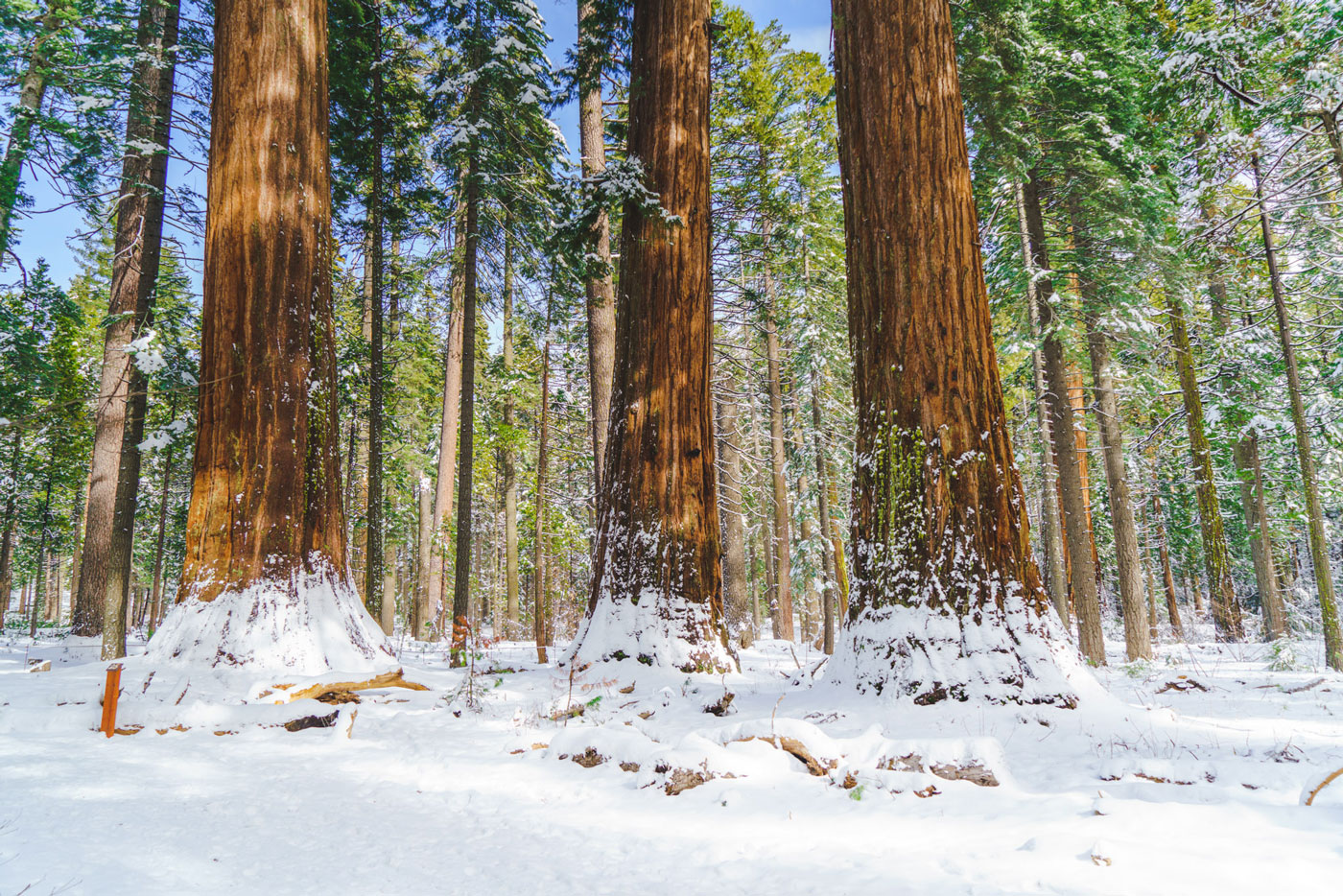
A future for the giant sequoias
The protection of California’s giant sequoias is at the heart of the American conservation movement.
During the Civil War, President Abraham Lincoln signed The Yosemite Valley Grant Act, transferring federal lands in Yosemite Valley and nearby Mariposa Big Tree Grove to the State of California, “upon the express condition that the premises shall be held for public use, resort, and recreation, and shall be inalienable for all time.”
Amidst the challenges of his time, Lincoln took action to secure the giant sequoias for future generations. That same opportunity is in the hands of giant sequoia land managers, elected officials, and policymakers right now.
This feature appears in the beautiful printed edition of Redwoods magazine, a showcase of redwoods conservation stories by leading scientists and writers, as well as breathtaking photos, and ways you can help the forest. Only a selection of these stories are available online.
Join our thousands of members today for only $25, and you’ll get future editions of our Redwoods magazine.